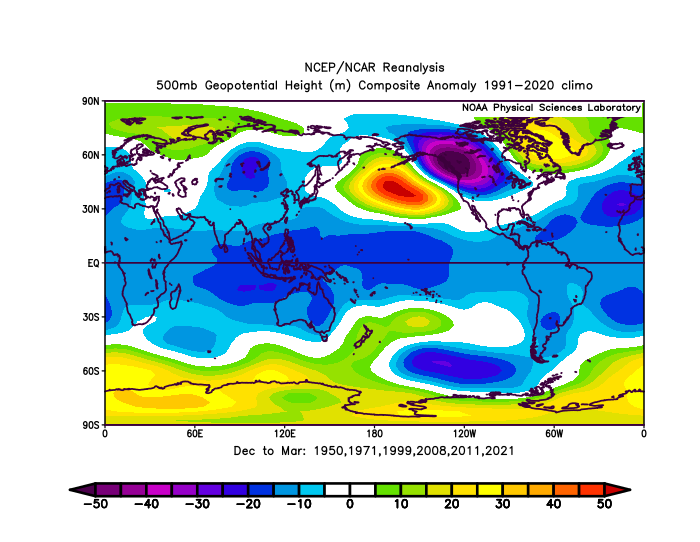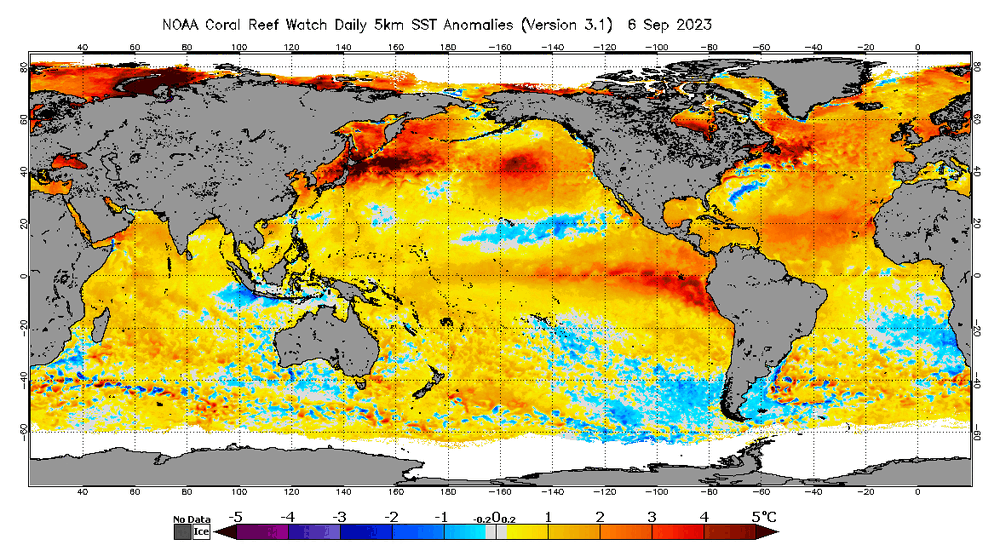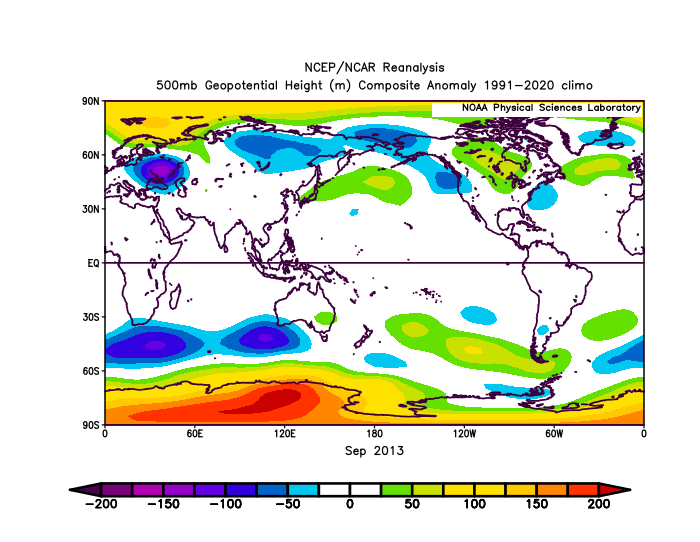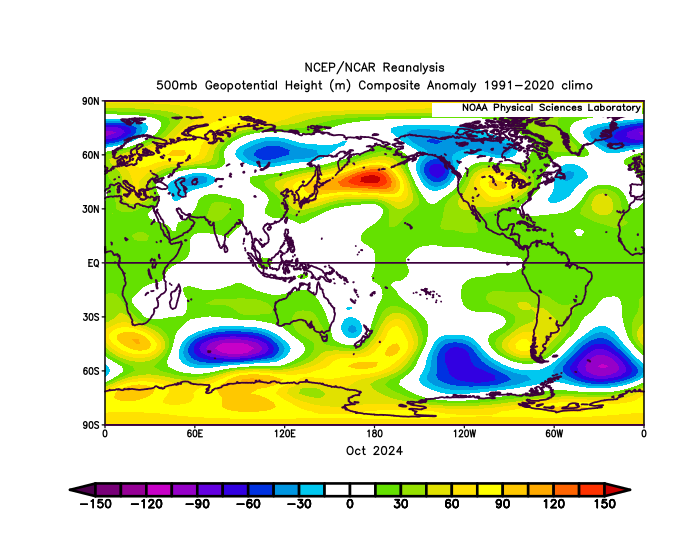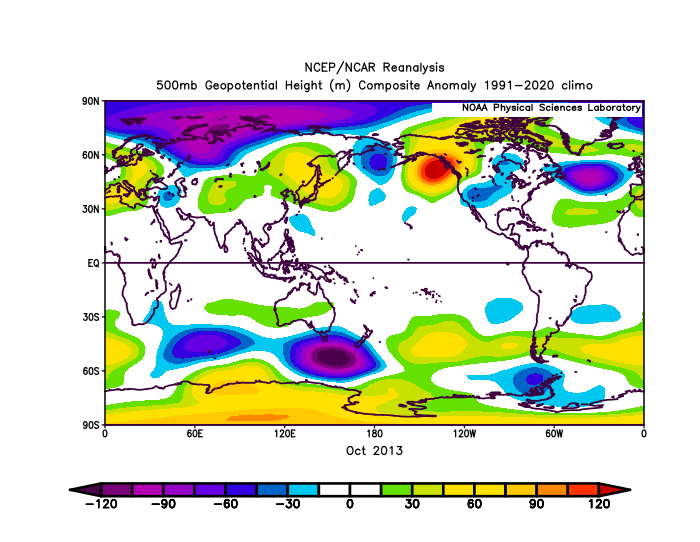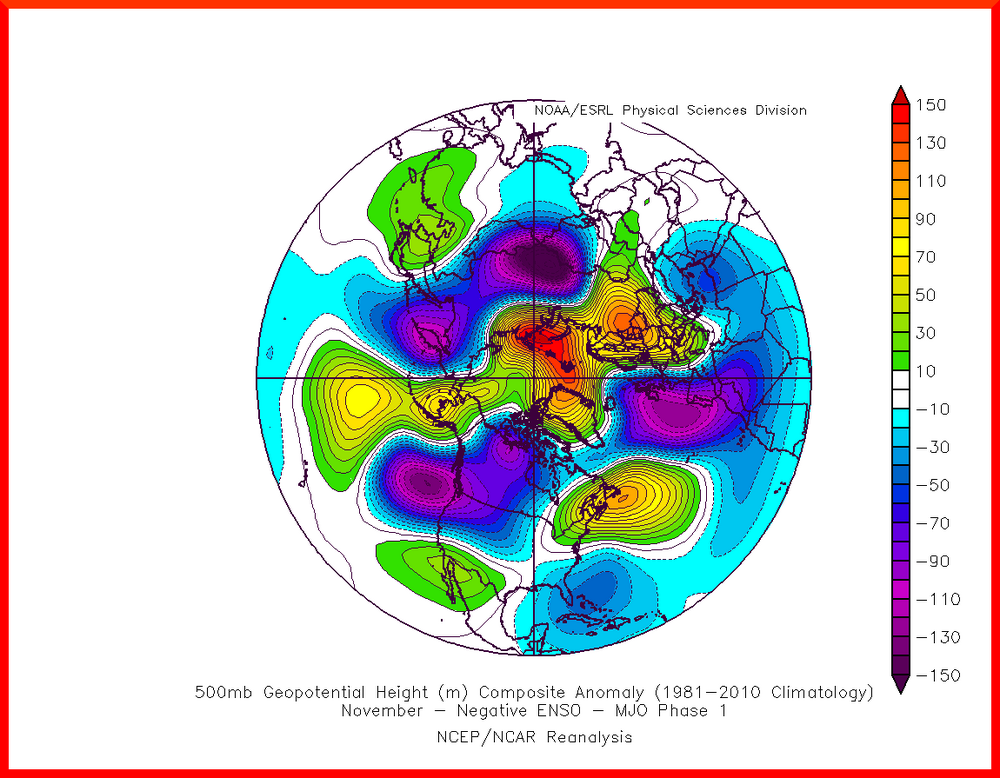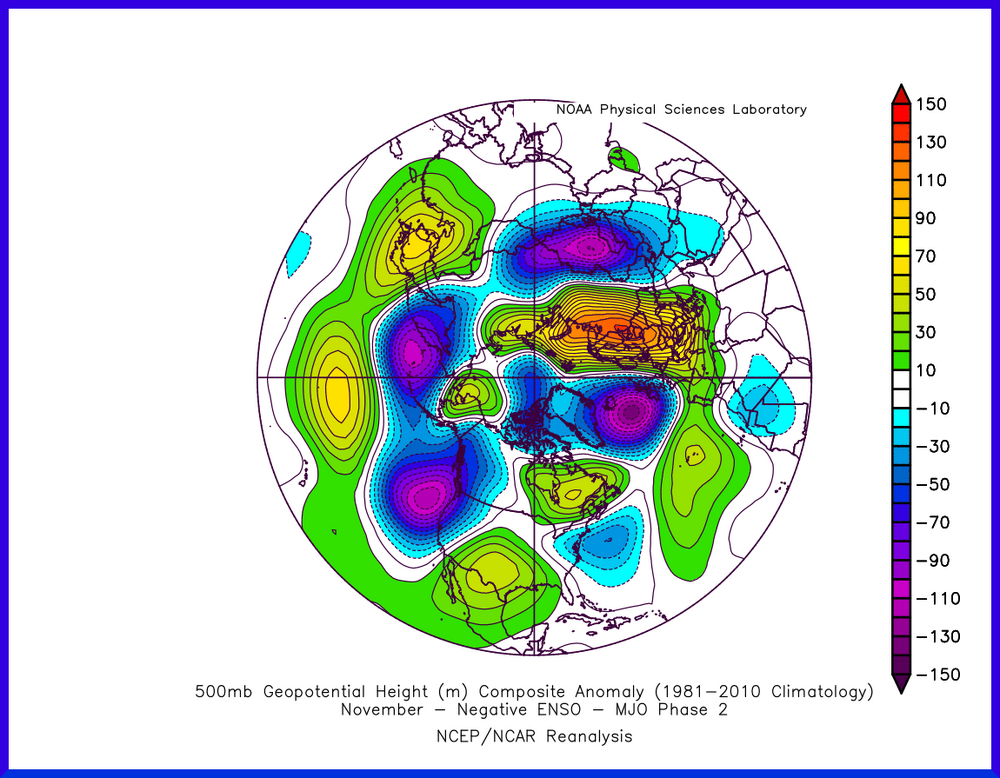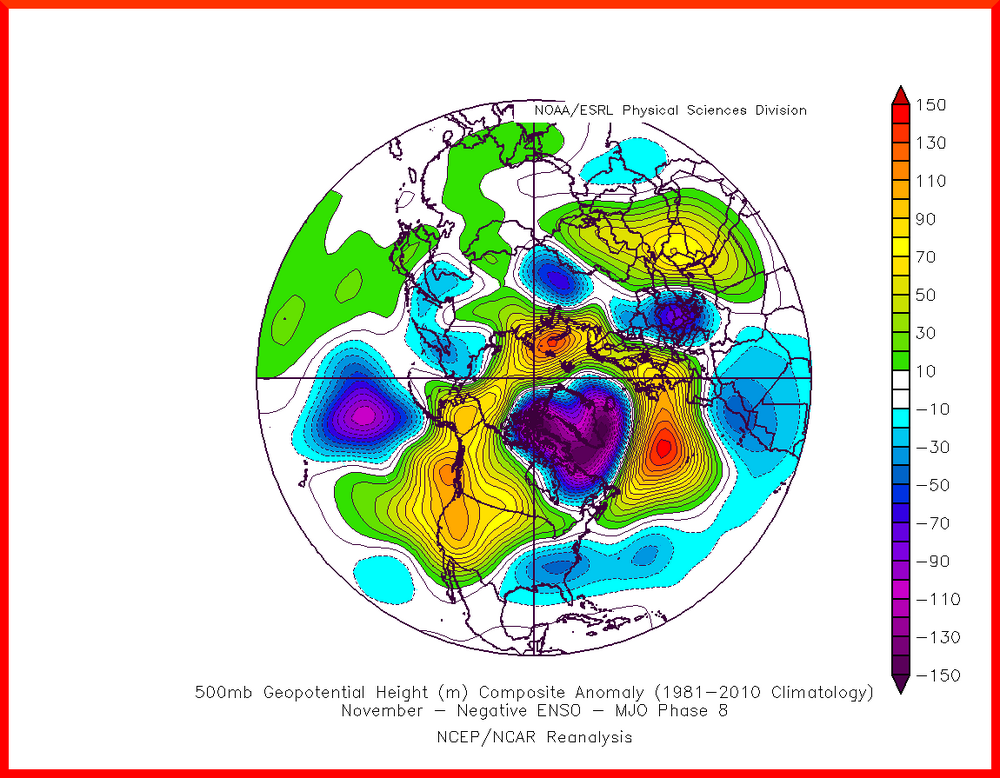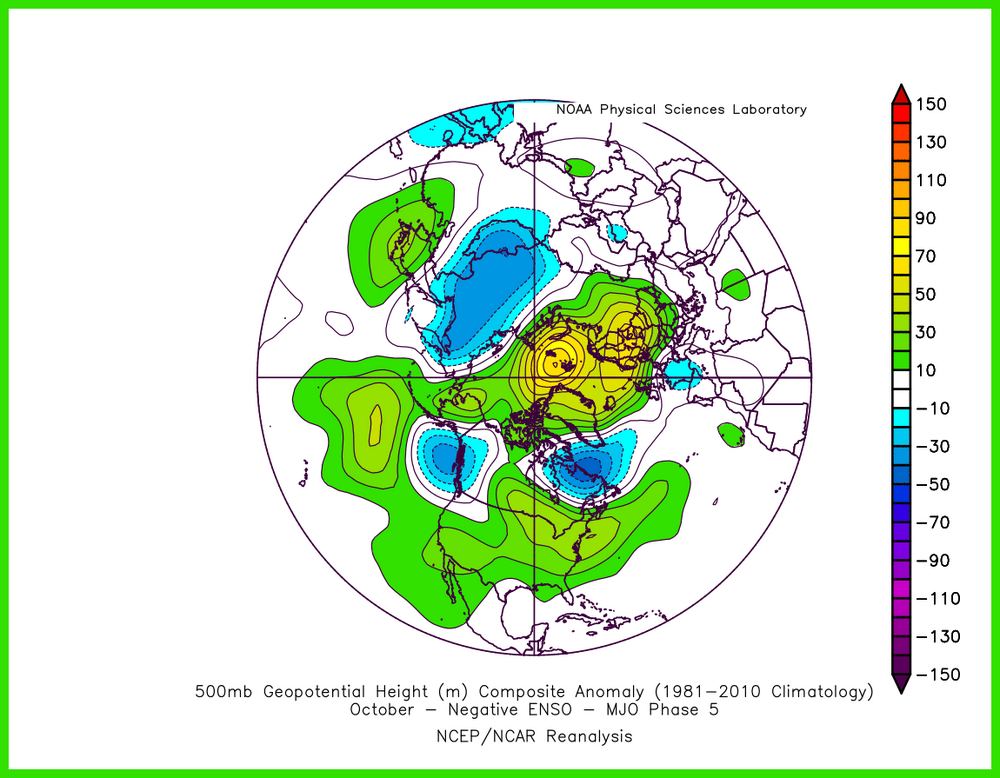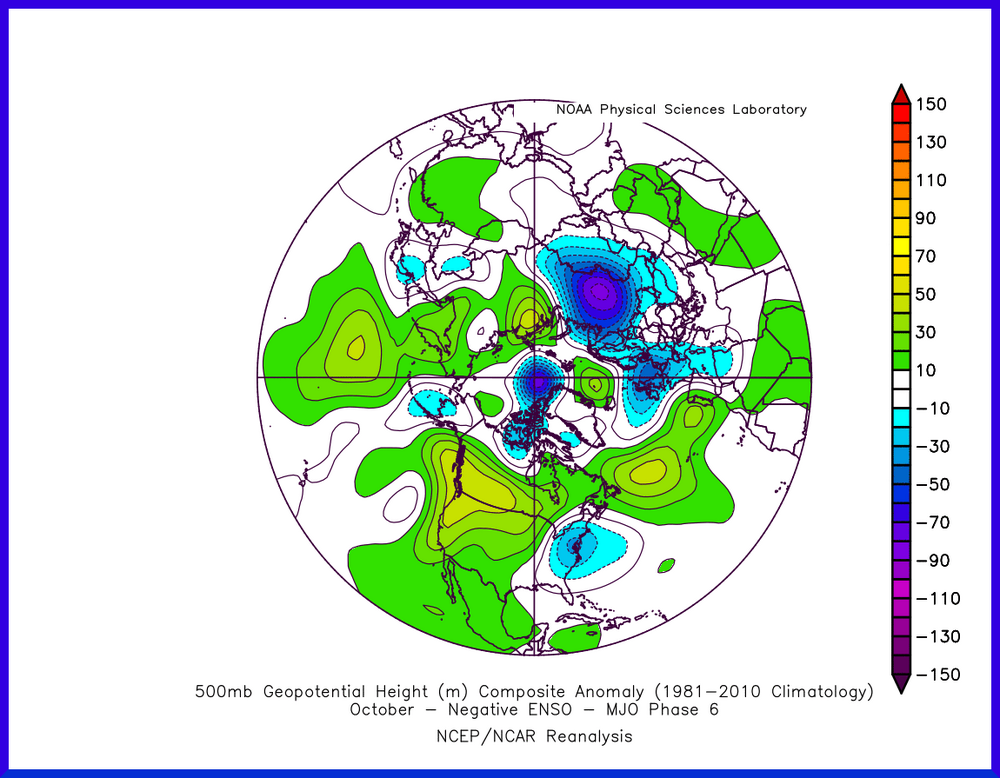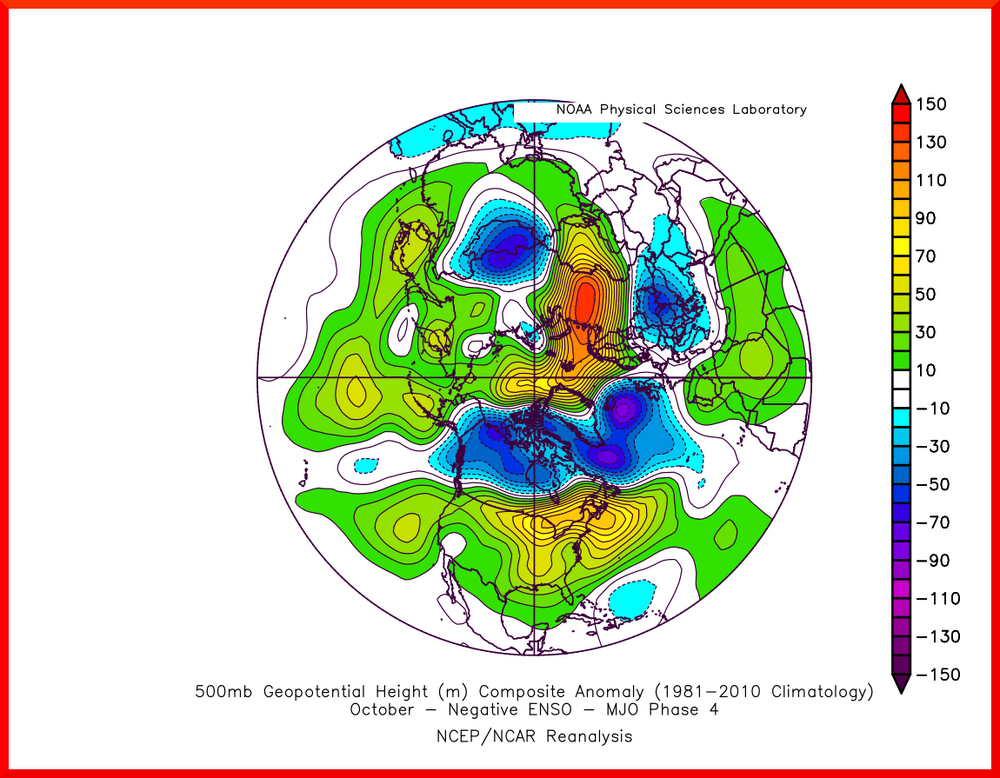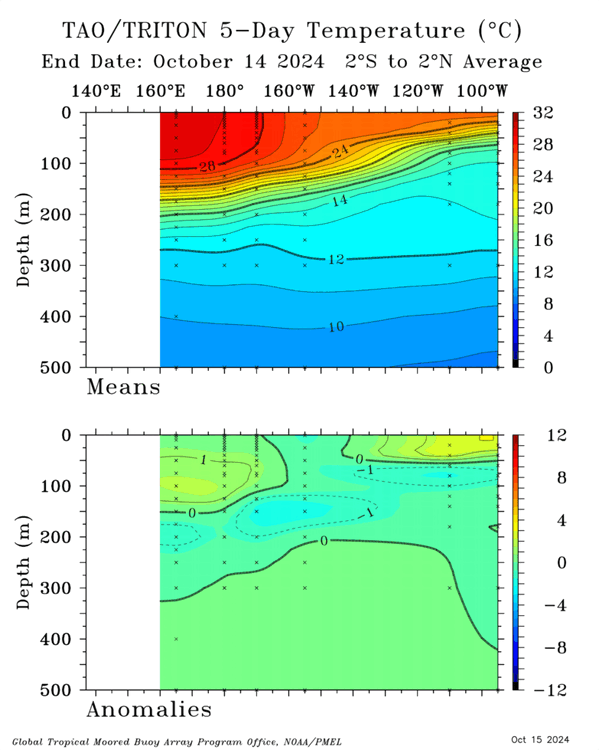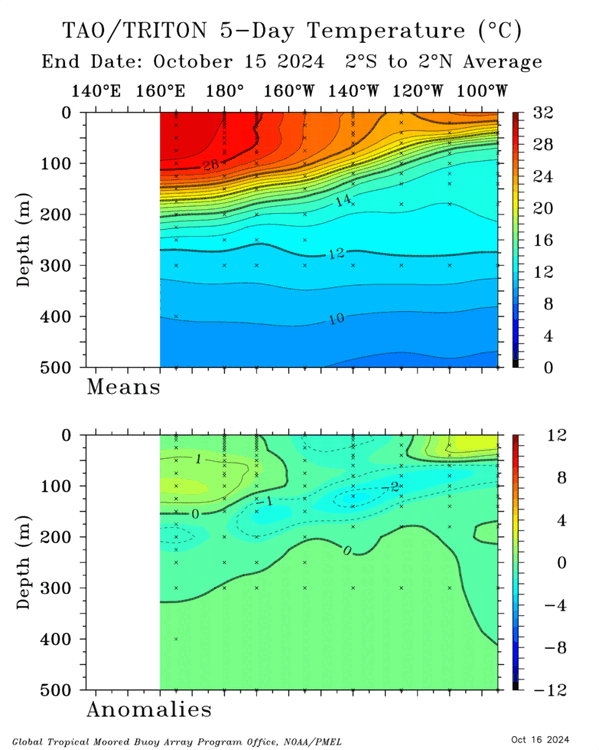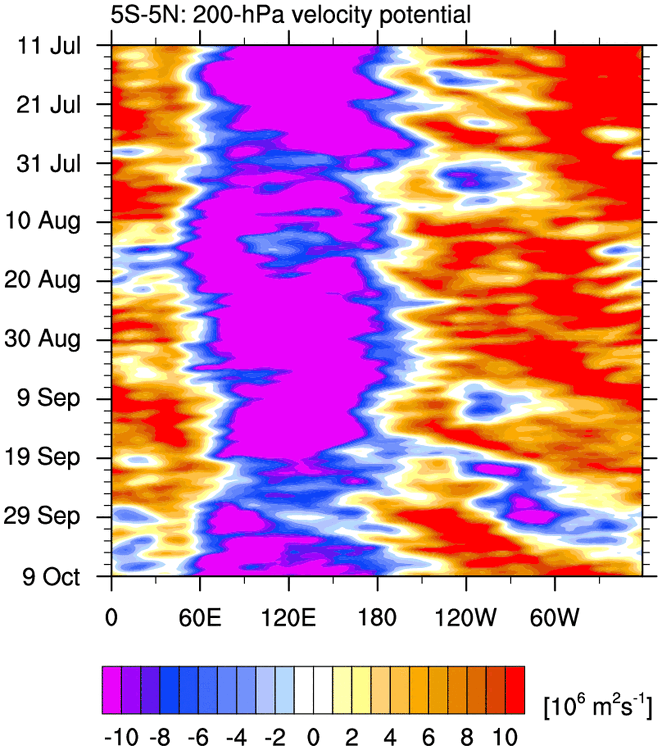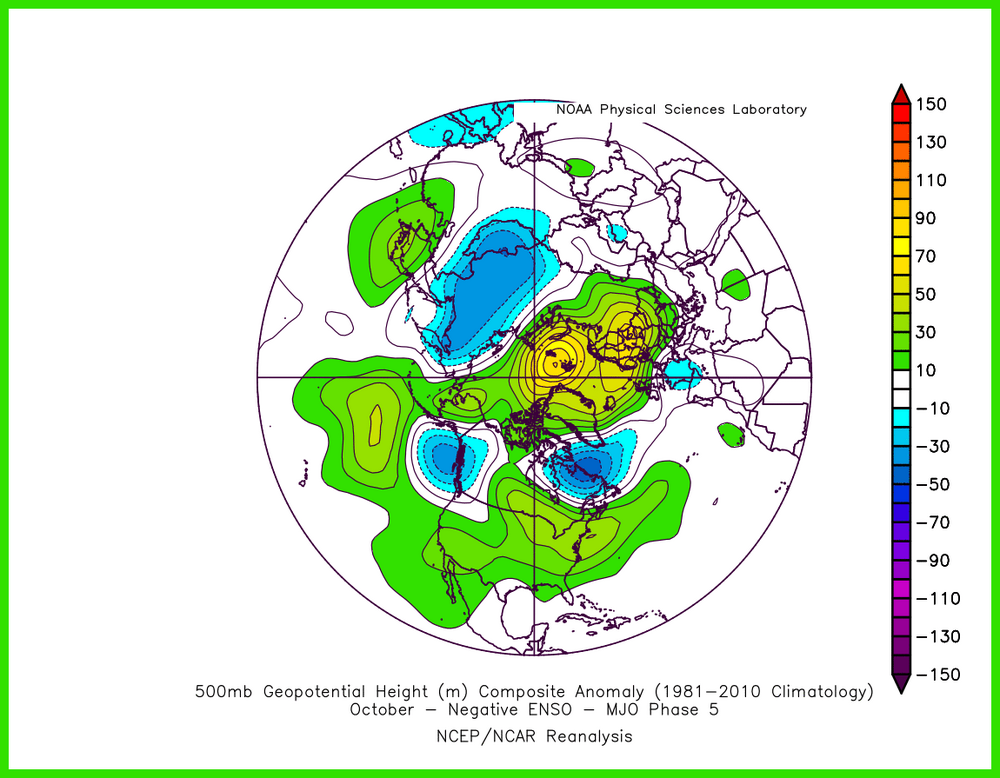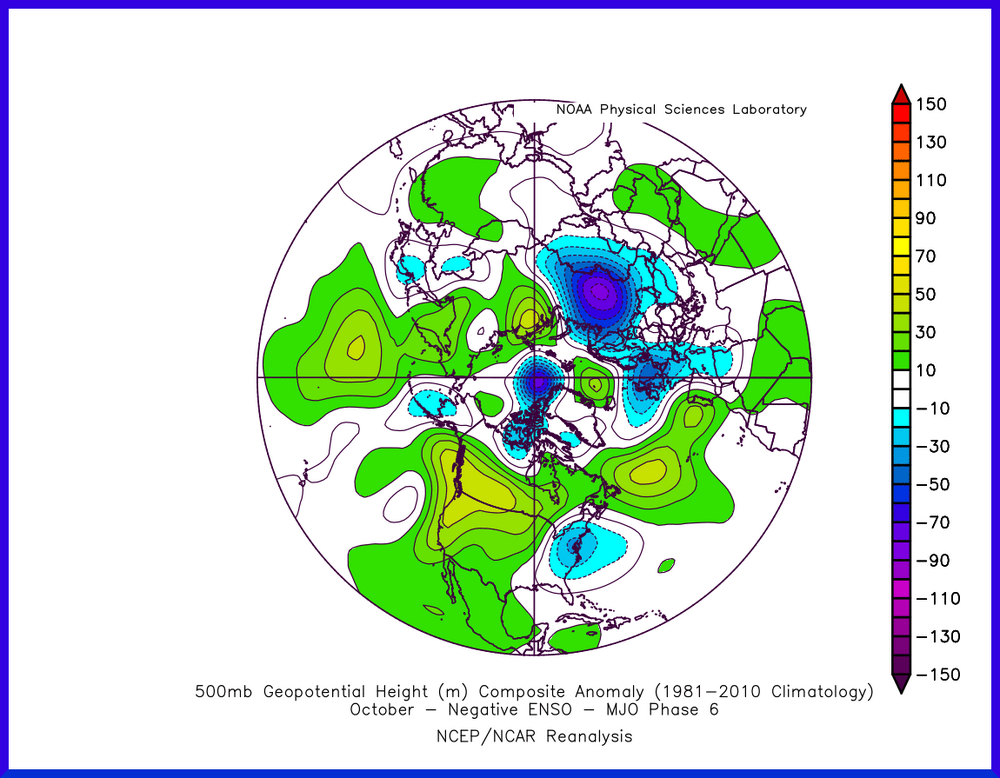
so_whats_happening
Meteorologist-
Posts
1,462 -
Joined
-
Last visited
Content Type
Profiles
Blogs
Forums
American Weather
Media Demo
Store
Gallery
Everything posted by so_whats_happening
-
2024-2025 La Nina
so_whats_happening replied to George001's topic in Weather Forecasting and Discussion
A bit too far south for my liking but we shall see what happens. If anything that cooling we are seeing is only reenforcing an already strong +AMO. I still am liking this as the forecast for this winter so far it does not seem to be steering me wrong. -
2024-2025 La Nina
so_whats_happening replied to George001's topic in Weather Forecasting and Discussion
Here was last years SST anoms from Sept to Dec. You will notice the 'cooling down' of SST anomalies but overall the pattern stuck. This year thus far we have seen a back and forth of the 500mb pattern maybe signaling the end of this insanely negative PDO pattern but it will still take time to evolve and change up the Pacific SST pattern. My hope was that as we moved toward winter we would start to weaken the -PDO value but not fully flip everything this year. This may be occurring but until we start to see reductions in values we will continue to wait. I will say it is nice to see these 'mismatches' occur but the theme should still be for things to be sent right back to where we started given relaxation in forcings. -
2024-2025 La Nina
so_whats_happening replied to George001's topic in Weather Forecasting and Discussion
Myself and others have noticed things seem to be off by about a month right now. Not to say this continues going forward but I can't help but think that maybe just maybe this still has a really solid possibility this winter. If we actually really start to reduce the -PDO within the next 2 weeks or so it only helps the idea. If we really start to amplify this -EPO pattern it could be interesting going forward. -
2024-2025 La Nina
so_whats_happening replied to George001's topic in Weather Forecasting and Discussion
Impressive changes going on across the warm pool. I expect a monthly down to -2 to -2.5 area for November and if activity continues then maybe just maybe above -2 for the first time in awhile. https://psl.noaa.gov/map/clim/sst.anom.anim.week.html -
2024-2025 La Nina
so_whats_happening replied to George001's topic in Weather Forecasting and Discussion
The QBO is changing at the upper levels like it usually does whether going westerly or easterly. The important factor still is the 30-50mb range regardless which shouldn't change for another ~12 months. They are correct though in stating the QBO is in the east descending phase as of right now. Westerly tends to descend faster than easterly so it shouldn't make a difference at all for winter, but it should give us clues going into next winter. -
Arctic Sea Ice Extent, Area, and Volume
so_whats_happening replied to ORH_wxman's topic in Climate Change
Third lowest sea ice volume for September 1979- Present only slight less than 2019 and slightly more than 2020 and well just not even close, yet, to 2012. https://psc.apl.uw.edu/wordpress/wp-content/uploads/schweiger/ice_volume/PIOMAS.2sst.monthly.Current.v2.1.txt -
2024-2025 La Nina
so_whats_happening replied to George001's topic in Weather Forecasting and Discussion
Phase 1 and Phase 2 look interesting coming up lets see if it happens. This type of pattern will start to put pressure on the Polar Vortex. Probably not enough to weaken it significantly just yet but enough to halt the strengthening and disturb it a bit. If we keep seeing these higher heights around the eastern European/ Kara Sea region flare up this may be the random shake-up that needs to occur to bring us out of the constant ridging barrage we have in place. Should be fun to see as we head toward winter. What would really seal the deal on a weakening PV and allow for some winter fun would be this around Kara sea and an Alaskan ridge... Not in sight right now but something maybe to watch as we go forward. If we go on with progression of the MJO we hit 4/5 again toward the end of the month and start to maybe (hypothetically at this point, since we would be so far away) swing into phase 7/8 as we close in on mid December, not great but not terrible. with maybe a chance at something stretching into early January. Just really depends on how fast the wave wants to move and the strength. Overall though looking rough to say the least. All Im looking for is some type of precip coming from the sky. Going on almost a month and a half with about a trace. Water restrictions hoisted around my area. -
2024-2025 La Nina
so_whats_happening replied to George001's topic in Weather Forecasting and Discussion
Solid rise and fall would mean many moving parts. I do think the trough will come, not being denied in that aspect but I would expect the forcing from phase 8 to come into November. Now I do not necessarily agree this will be the look for November though maybe after the trough swings through? (hence the red border, some of the lowest probabilities you will find) I do find it weird though that we would have one phase show up more than another meaning we don't even see Phase 7 pop in for October if we are getting an instant reaction but we do see Phase 8. -
2024-2025 La Nina
so_whats_happening replied to George001's topic in Weather Forecasting and Discussion
Maybe this is what you are looking for? http://www.bom.gov.au/climate/mjo/#tabs=Monitoring -
2024-2025 La Nina
so_whats_happening replied to George001's topic in Weather Forecasting and Discussion
This seems like a pretty major AO shift to me. -
2024-2025 La Nina
so_whats_happening replied to George001's topic in Weather Forecasting and Discussion
Sensible weather lags what phase the MJO is in. We are in Phase 5 currently but we certainly look to be in a Phase 4 with the current weather pattern. I would expect Phase 8 influences to be in November. -
2024-2025 La Nina
so_whats_happening replied to George001's topic in Weather Forecasting and Discussion
-
2024-2025 La Nina
so_whats_happening replied to George001's topic in Weather Forecasting and Discussion
Most MJO forecasts barely put us in 8 by the end of the month and the effects won't be felt right away so I would expect that in mid latitudes for November. https://www.cpc.ncep.noaa.gov/products/precip/CWlink/MJO/CLIVAR/clivar_wh.shtml Here is 5 and 6 though, 5 seems to be the reasonable look we have for that time frame. -
2024-2025 La Nina
so_whats_happening replied to George001's topic in Weather Forecasting and Discussion
I mean just looking at the SST patterns they look very similar in both time periods, right now we have warmer oceans so to compensate for the same -PDO signature and value we have higher anomalies than the surroundings just as you did back in the day. As for the 500mb pattern can't explain the difference but we could easily be in a constructive pattern versus a destructive pattern overall. Im sure the atmospheric warmth right now plays a role in allowing a more ridge like presence versus a trough like presence but im sure this flip flops so much it is hard to say this will be what the pattern should be. The biggest issue I have is we have seen these marine heatwaves before this is in fact what you are pointing out right now but what is to say that a -PDO should produce this atmospheric pattern. It may be more common for a pattern to occur during these strong phases of teleconnection but it does not necessarily mean that this will always be the resulting pattern. Im sure ill get lambasted for such a take. -
2024-2025 La Nina
so_whats_happening replied to George001's topic in Weather Forecasting and Discussion
April of 1859 and July of 1950 both tied at -3.65 if my eyes have not deceived me. This is the most negative block of PDO years we have seen since the early 1950's. If we continue on this path of -2.5 and below we could end the year as the most negative average PDO year on the ERSST records. As for your second point yea having the PDO this low late into the year typically means we have a continuation even if there ends up being a relaxation of the PDO values as we close out the year. -
2024-2025 La Nina
so_whats_happening replied to George001's topic in Weather Forecasting and Discussion
TAO finally brought back online the eastern portions of the subsurface (not sure for how long) you can see just how much of a difference this makes in the overall look. Much more inline now with the CPC look although the most upper portions of eastern Nino 3 are a bit off between the two. BTW some things are finally starting to be updated from NCEI. One in particular that went wild with this last update, PDO. Ill just leave the link below and folks can take a look at it when they get the chance. https://www.ncei.noaa.gov/pub/data/cmb/ersst/v5/index/ersst.v5.pdo.dat -
2024-2025 La Nina
so_whats_happening replied to George001's topic in Weather Forecasting and Discussion
The bolded was probably the biggest factor this year maybe they go hand in hand? When we finally relaxed the VP pattern where it was globally showing more uplift versus being concentrated around Maritime Continent things went wild. You can see the brief breaks in VP that allowed the small portion of time where storms were able to form. I get where you are coming from with ITCZ shift but to me that just signals a storm that would have formed but have a better recurve potential versus one in lower latitudes of around 7-10N. I do ask is there evidence of this via wind anomalies now that we have passed that time frame that we did indeed shift the ITCZ further north? I would assume we would need to look at maybe 850mb for this observation but Tropical is not my forte. -
2024-2025 La Nina
so_whats_happening replied to George001's topic in Weather Forecasting and Discussion
It is not far fetched to believe that if indeed we do see the -WPO periods that a -EPO happens in tandem, as for staying power I do not believe that will be the case but weirder things have happened. I think it is still a good idea to know that oddities do happen and that certainty this far out is anyone's guess. If the idea is true that atmospheric mode changes before oceanic temps do then one shouldn't get caught up in the here and now of current oceanic temps, just know that the pattern could easily revert back type of deal. Take a look at mid month for an example even with a strong -PDO and an Aleutian Low (though this is much further west in a more ideal spot) the resulting pattern in the east is one that folks would love if this happened closer to winter time. Just stuff to keep in mind as we have seen extremely harsh conditions over the east over the last few years, it is nice to see some breaks in the persistence department. -
2024-2025 La Nina
so_whats_happening replied to George001's topic in Weather Forecasting and Discussion
I think we see a lot of back and forth with the WPO this year. I believe this is what raindance was trying to articulate before he left. While yes the -PDO state will still have a strong influence I could see us overall near neutral in the WPO department with some periods of pronounced + and - WPO patterns mixed around. I don't believe as of now we see a steady state of +WPO this winter. As always this could change but if the constant back and forth we are seeing now is an indication ill take it. -
2024-2025 La Nina
so_whats_happening replied to George001's topic in Weather Forecasting and Discussion
Nice I agree as well overall though I do expect the mean trough to probably be a little further west and probably the Aleutian Ridge but as you state timing is and always will be everything. We have come rather close with several storms over the past couple years but timing was just off or the cold retreated just too quickly. I will say it will be interesting to watch the NAO state as we get further into Fall and early Winter. For some reason we have flipped that switch and we could just as easily flip it back so that may be a bit of a wild card. I do believe we continue to see the slow demise of the -PDO state. It ain't flipping this year but a gradual push to neutral is something that has been on my mind for a bit. While the atmospheric pattern still tries to revert back to the ridge around Japan it seems to only have flairs right now of that state which could serve us opportunity, as expected with timing of course. Also good luck with the job search it is really difficult right now to get into the field, very competitive. With one maybe two spots open at NWS offices and nearly 20-30 applicants it is tough to stand out. I presume you are trying the NWS route. Luckily I have the weather observer job currently so I get minimal experience under my belt and look like a little bit of an oddball when applying to locations, but seriously though best of luck to you. -
2024-2025 La Nina
so_whats_happening replied to George001's topic in Weather Forecasting and Discussion
Most products will have late updates due to the NCEI issue from Helene. -
2024-2025 La Nina
so_whats_happening replied to George001's topic in Weather Forecasting and Discussion
Nah we are going to be waiting a bit on data due to the NCEI issues from Helene, not sure when things will be back up and running. -
2024-2025 La Nina
so_whats_happening replied to George001's topic in Weather Forecasting and Discussion
Maybe for the bolded but this is about when we typically start to see the seasonal change enough to end the season. Still could be a random storm that pops up in the Caribbean but nothing on the horizon as we go toward mid month and further. I like to think solar does still have some important impacts into patterns but I think of it as a bit of a lagged component in that this spike will show up later on in our sensible weather. -
2024-2025 La Nina
so_whats_happening replied to George001's topic in Weather Forecasting and Discussion
We are just about at what used to be the seasonal average (1950-2000) for ACE at about 90 ish. The ACE of 1991-2020 climo era is what used to be considered a hyperactive season which is now the average. Anyways we are right at average for total storm/ hurricanes/ major hurricanes for the season. It looks as though we get maybe one more named system but we should trail off the season near the time it typically does. Kirk and Leslie alone should be able to pick up enough ACE to put us right near the 1991-2020 climo ACE. As for other areas the strong WWB event in the Indian Ocean looks to spark a cyclone for that region and maybe 1 more solid typhoon in the WPAC before things globally calm down a bit. Most models still have what looks like a solid 5/6 pass for the MJO coming up around mid month. We should also start to see the -NAO relax quite a bit going forward as well but that western ridge may mean business again as we get to mid month. Here is a look at what the pattern could entail based off an MJO Nina passage through 5/6. I started using the Nina base instead of La Nada as we are right on the edge of La Nina status versus over the summer where were virtually neutral. Nothing too exciting on the horizon which is probably for the best after Helene, most could use a solid dry period. Im excited to get some nice diurnal swings and maybe get a solid kick start into leaf changing season. Ill update some of the Oceanic components sometime next week.

